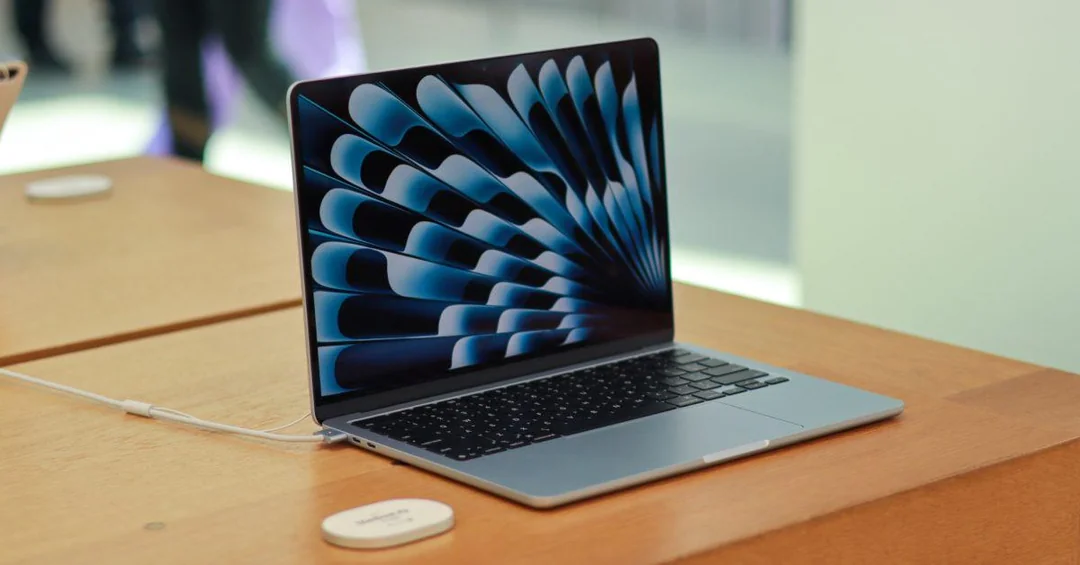Apple is preparing to disrupt the laptop market once again, but this time with a twist that few saw coming. The tech giant is reportedly gearing up to launch a new budget-friendly MacBook powered not by its traditional M-series silicon, but by the A18 Pro chip—the same processor found in the iPhone 16 Pro. This strategic shift marks Apple’s first serious foray into the midrange laptop segment, and it could redefine what consumers expect from affordable computing.
Let’s unpack what this bold move means for Apple, its users, and the broader PC industry.
A New Chapter in Apple’s MacBook Strategy
Historically, Apple has positioned its MacBook lineup as premium devices, with even the entry-level MacBook Air priced well above ₹90,000. While older models like the M1 MacBook Air occasionally dip into the ₹60,000 range during sales, Apple has never officially offered a new MacBook at a truly budget-friendly price.
That’s about to change. Reports suggest the upcoming MacBook will start at just $599 (approximately ₹52,000), with a slightly higher variant priced at $699 (around ₹61,000). For students, Apple may offer additional discounts, making this the most accessible MacBook ever released.
This move is not just about affordability—it’s about expanding Apple’s ecosystem to a wider audience. By lowering the barrier to entry, Apple can attract students, first-time buyers, and users in emerging markets who previously opted for Windows laptops due to cost constraints.
The A18 Pro Chip: iPhone Power Meets macOS
At the heart of this new MacBook lies the A18 Pro chip, a processor originally designed for the iPhone 16 Pro. While some might view this as a downgrade from the M-series chips used in current MacBooks, benchmark data tells a different story.
In single-core performance, the A18 Pro actually outpaces the M1 chip, scoring 3,409 compared to the M1’s 2,368—a 43 percent improvement. Multi-core scores are nearly identical, with the A18 Pro clocking in at 8,482 versus the M1’s 8,576. These figures suggest that the A18 Pro is more than capable of handling everyday tasks, from web browsing and document editing to light photo and video work.
Apple is expected to optimize the A18 Pro for macOS, ensuring smooth multitasking, efficient thermal management, and long battery life. This chip also supports Apple Intelligence features, meaning users will benefit from AI-powered tools for productivity, creativity, and accessibility.
Design and Display: Compact, Colorful, and Youthful
The new MacBook is rumored to feature a 12.9-inch display, slightly smaller than the 13.6-inch panel on the MacBook Air. This compact form factor is reminiscent of the discontinued 12-inch MacBook, which was praised for its portability and sleek design.
Apple is also expected to introduce a range of vibrant color options, including blue, pink, silver, and yellow. This playful palette echoes the strategy used with the iMac and iPhone, appealing to younger users and those who want a device that reflects their personality.
Despite its budget positioning, the MacBook will likely retain Apple’s signature build quality, with a slim chassis, high-resolution Retina display, and precision-engineered keyboard and trackpad.
Storage and Memory: Lean but Functional
Initial reports suggest the base model will come with 8GB of RAM and 128GB of storage. While this may seem modest compared to higher-end MacBooks, it’s sufficient for most everyday tasks. Apple may also offer a 256GB variant for users who need more space.
Given the efficiency of the A18 Pro chip and macOS’s optimization, users can expect snappy performance and minimal lag, even with these entry-level specs.
Software Experience: Full macOS, Not a Compromise
One of the most exciting aspects of this new MacBook is that it will run a full version of macOS, not a scaled-down or hybrid OS. This means users will have access to the same apps, features, and updates as those using more expensive MacBooks.
From Safari and Final Cut Pro to Pages and GarageBand, the software experience will be consistent across the lineup. This ensures that users can enjoy the full benefits of Apple’s ecosystem, including seamless integration with iPhones, iPads, and AirPods.
Battery Life and Efficiency: iPhone DNA at Work
Apple’s A-series chips are known for their power efficiency, and the A18 Pro is no exception. In the iPhone 16 Pro, this chip delivers excellent battery life despite high performance demands. Translated to a MacBook, users can expect all-day battery life, potentially exceeding 12 hours of mixed usage.
This makes the budget MacBook ideal for students, remote workers, and travelers who need a reliable device that won’t constantly need charging.
Market Impact: A Strategic Play Against Windows Laptops
By launching a MacBook at ₹52,000, Apple is entering territory traditionally dominated by Windows laptops from brands like HP, Dell, and Lenovo. These devices often offer decent specs but lack the polish, ecosystem integration, and long-term software support that Apple provides.
With the new MacBook, Apple is offering a compelling alternative—premium design, optimized performance, and macOS—all at a competitive price. This could lead to a significant shift in consumer preferences, especially among younger buyers and those looking for a reliable secondary device.
Industry analysts predict that Apple could sell between 5 to 7 million units annually, potentially increasing its overall MacBook shipments by 30 to 40 percent. This would be a major boost for Apple’s PC business and a challenge to its competitors.
Timing and Availability: What to Expect
Production of the budget MacBook is expected to begin in September 2025, with mass manufacturing ramping up in the following months. A launch is likely by the end of 2025 or early 2026, possibly timed to coincide with Apple’s education campaigns or spring product announcements.
While Apple has not officially confirmed the device, multiple reports from supply chain sources and analysts suggest that development is well underway.
Final Thoughts: Democratizing the Mac Experience
Apple’s decision to launch a budget MacBook powered by an iPhone chip is bold, unconventional, and potentially transformative. It challenges the notion that high-quality laptops must come with high price tags and opens the door for millions of new users to experience macOS.
For students, casual users, and budget-conscious buyers, this device could be the perfect entry point into Apple’s ecosystem. It offers the performance of a flagship smartphone, the versatility of a laptop, and the polish of Apple’s design—all at a price that’s finally within reach.
If the rumors hold true, the budget MacBook could become one of Apple’s most important launches in years, reshaping its laptop strategy and expanding its global footprint.



